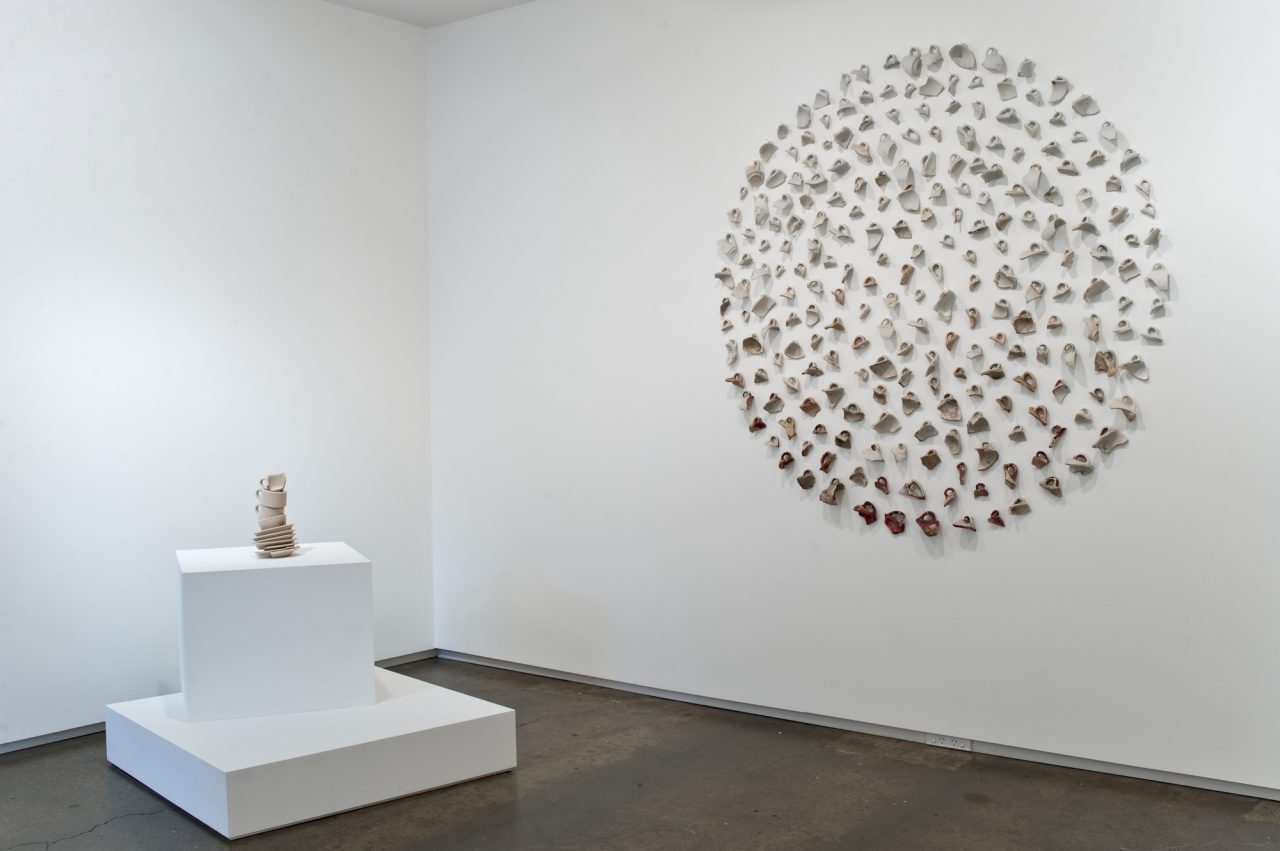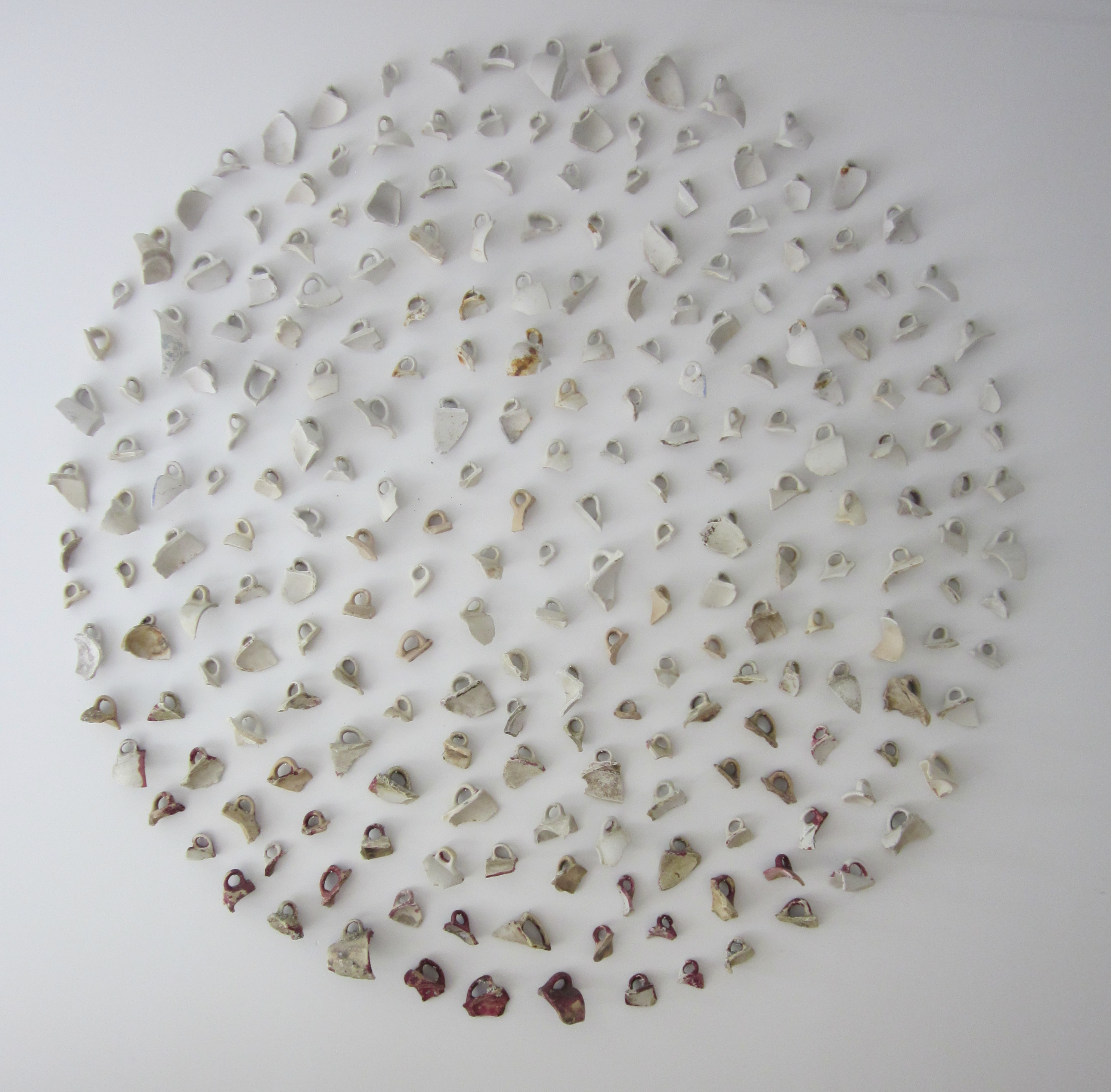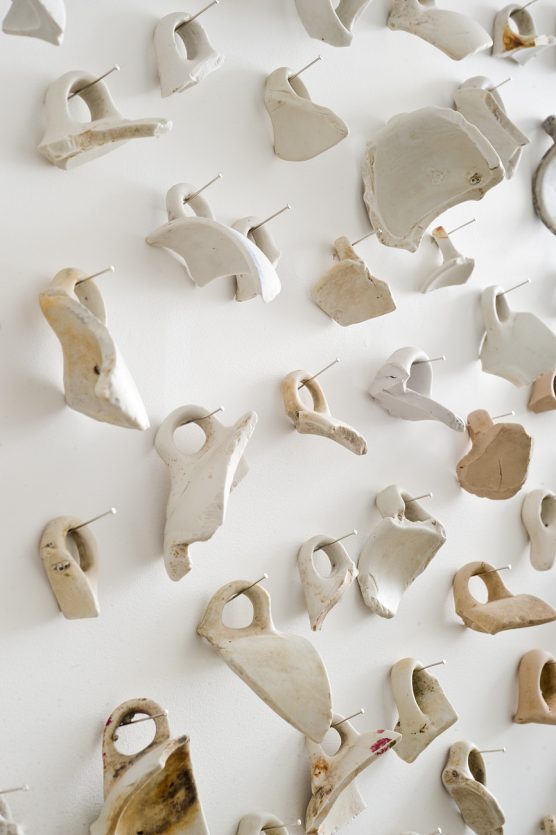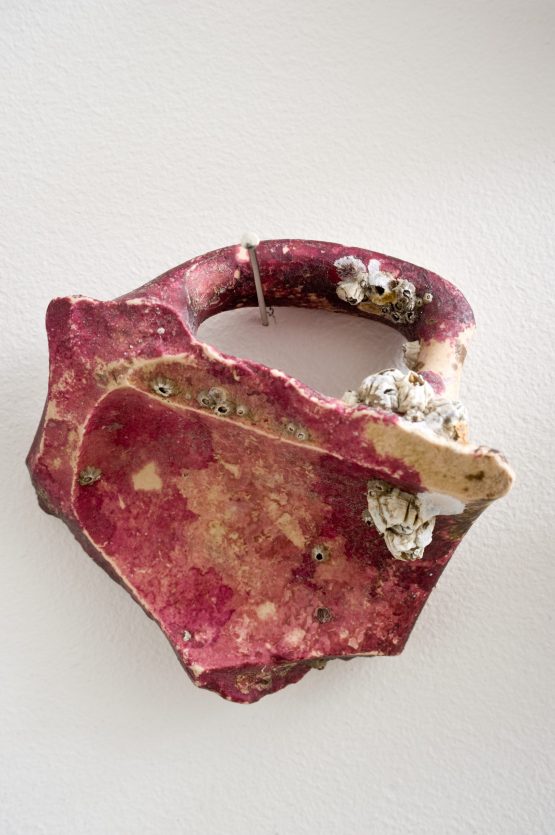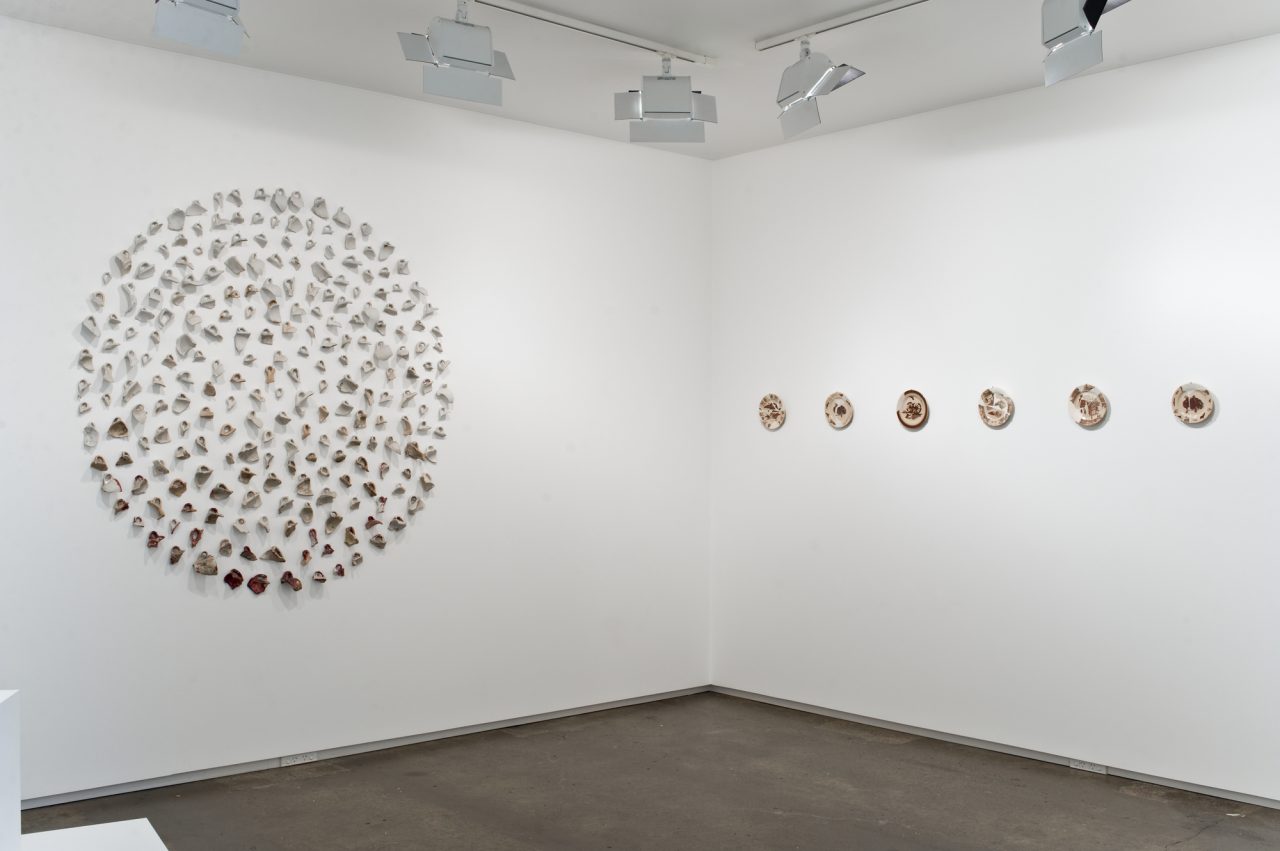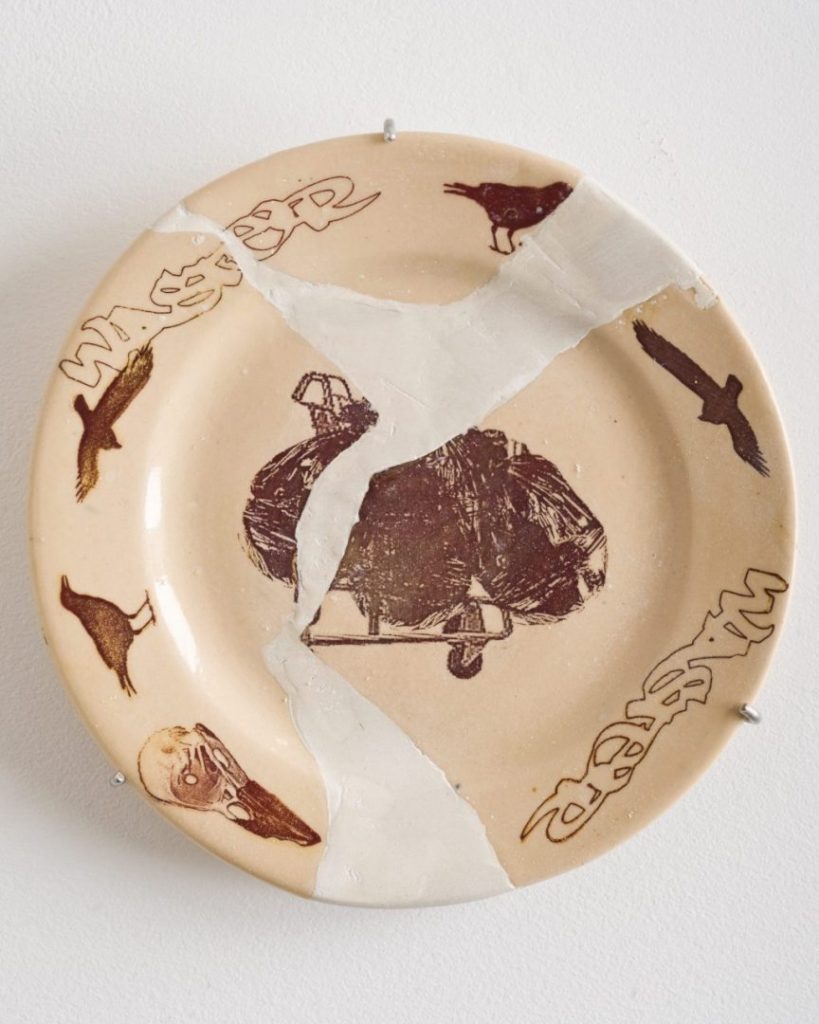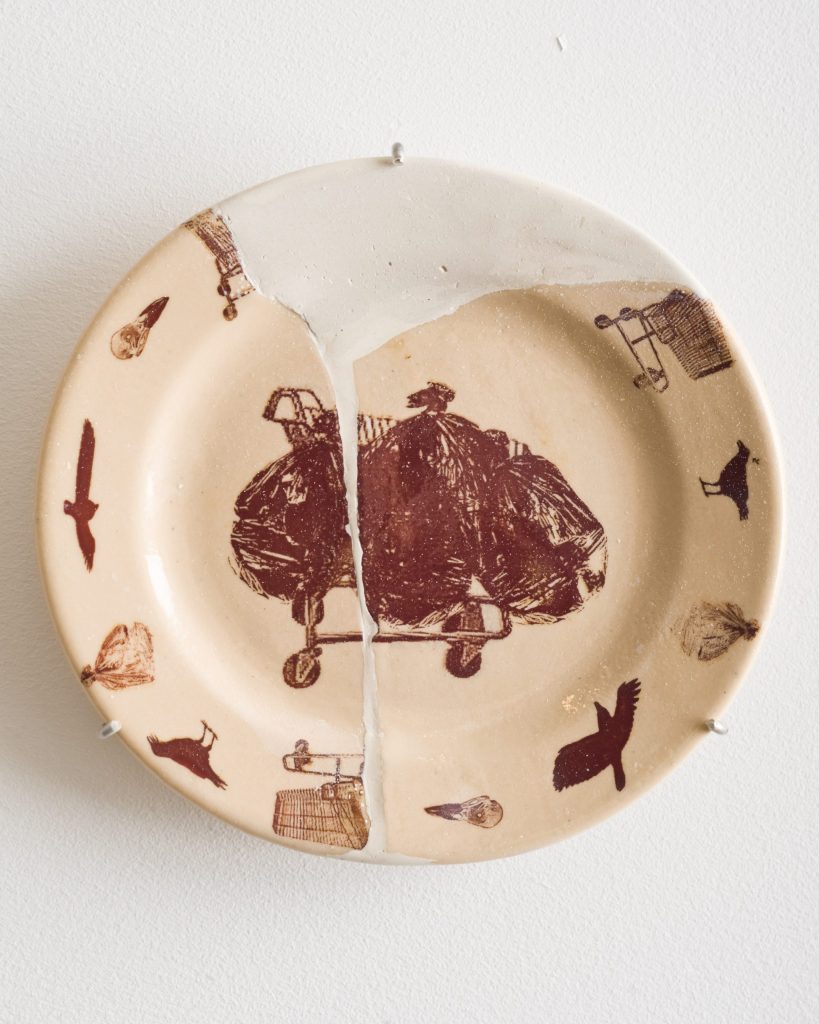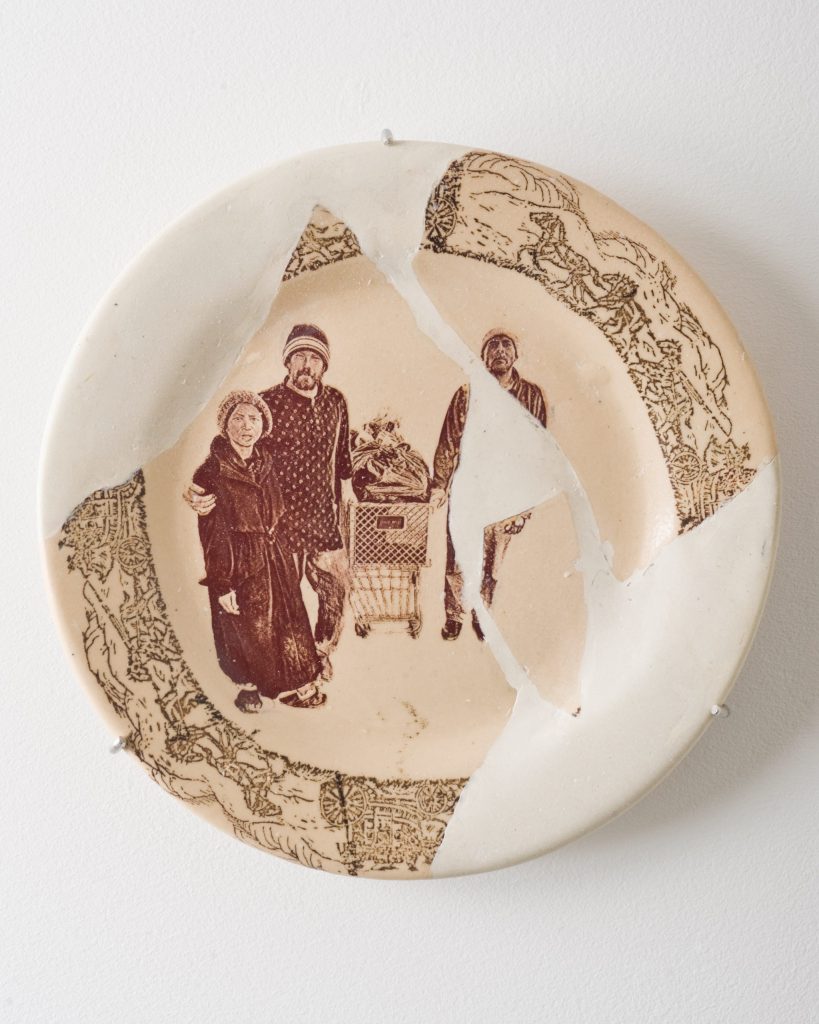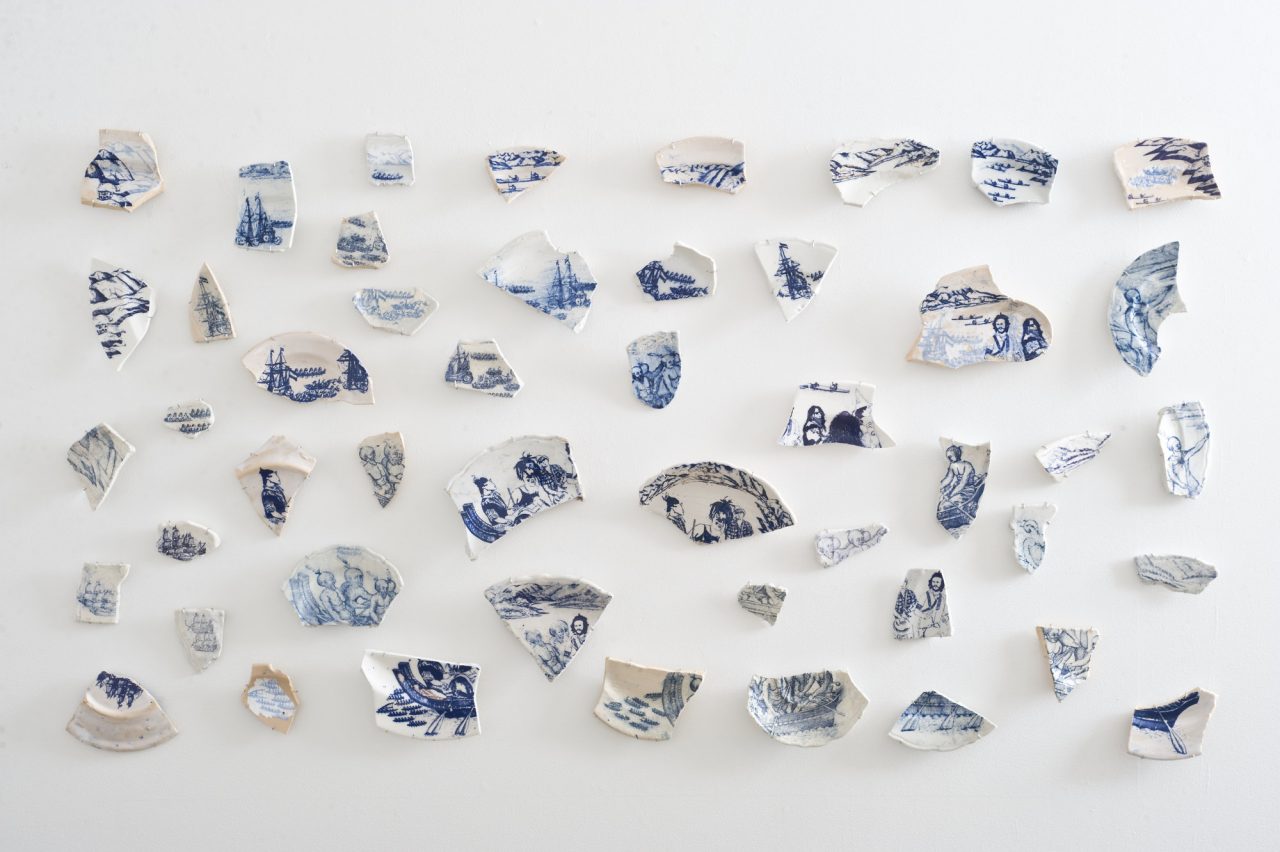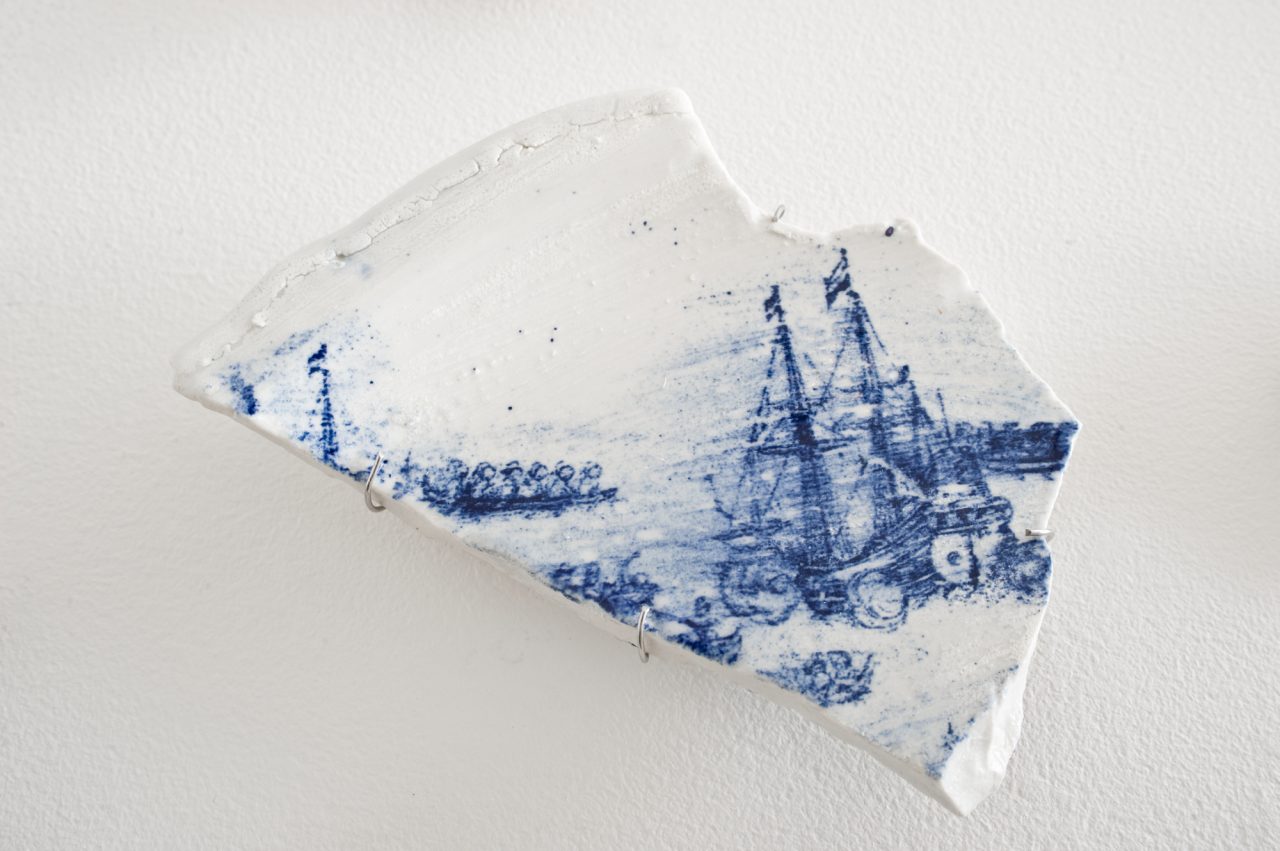Wasters 14 October to 2 November 2013 Bowen Galleries, Wellington
“I think it is important to hold onto the idea of truth as a fragmentary shard” Linda Williams
“Your fictions become history” Barbara Kruger
The shards in this exhibition were recovered from the shore of Point Isabel, the Bay Area, California, which had been the dumping site for over thirty years for wasters, (the failures from industrial production) from the Tepco ceramic factory. The shore was layered with shards, from the banks, where they lay buried, to below the low tide mark. They suggested a catastrophic event to be discovered and interpreted by a future civilization. Some of the wasters bore Western Frontier designs and these have been combined with images recording my own impression of The West. It seemed important to recover, recycle and reform them. The reconstructed plates are not a perfect fit, but an approximation, like history. Images include street people recycling materials in order to live. It also features a the large number of crows and ravens which American nature writer, Rebecca Solnit, in her essay “A Murder of Ravens” likens to people thriving in an urban environment at the expense of other species.
The Other Shore combines the now iconic illustration, ‘Murderer’s Bay’ and the Blok Fragment, a possibly earlier illustration, along with contemporary images uplifted from the Golden Bay Promotion Association website. I was asked to contribute to a project, “A View on Golden Bay at about the same time as I was collecting shards on the Bay Area shore. Participants were asked to respond to ‘Murderer’s Bay’ and to muse on what happened. Murderer’s Bay, with its strange perspectives, is a Dutch account of the first meeting and fatal encounter between Māori and Europeans when Ngāti Tumatakōkiri and Abel Tasman’s crew met in December 1642. The illustration is attributed to Isaac Gilsmans. However, another illustration known as The Blok Fragment is suggested as possibly the earlier version and there are some significant variations in details. Information related to these illustrations was fed via email like fragments. The white and weathered shards from Tepco Beach seemed the perfect vehicle to explain the fragmentary nature of history. Blue was chosen for the transfers to reference Delft which was being produced at the time of Tasman’s encounter.
